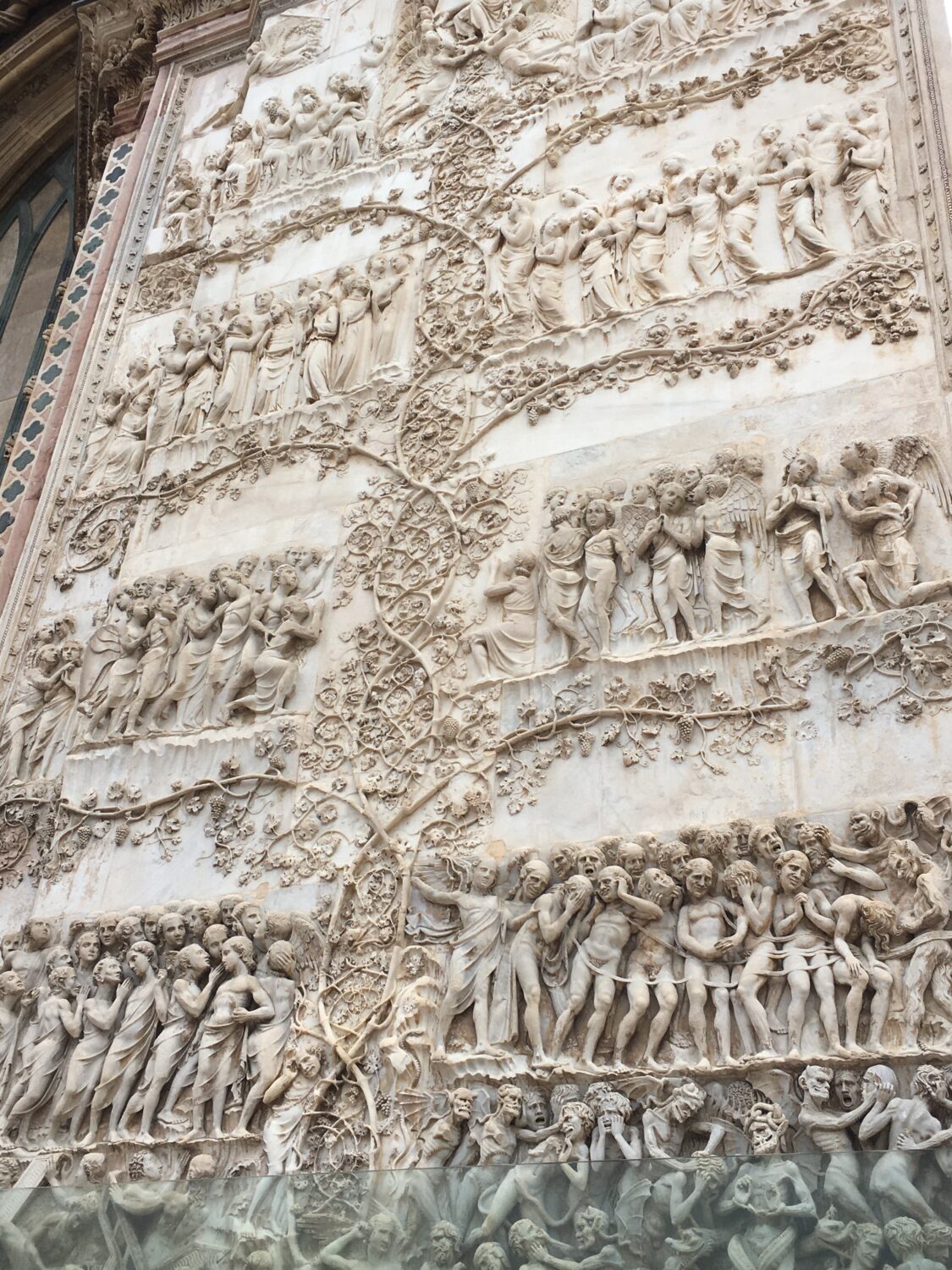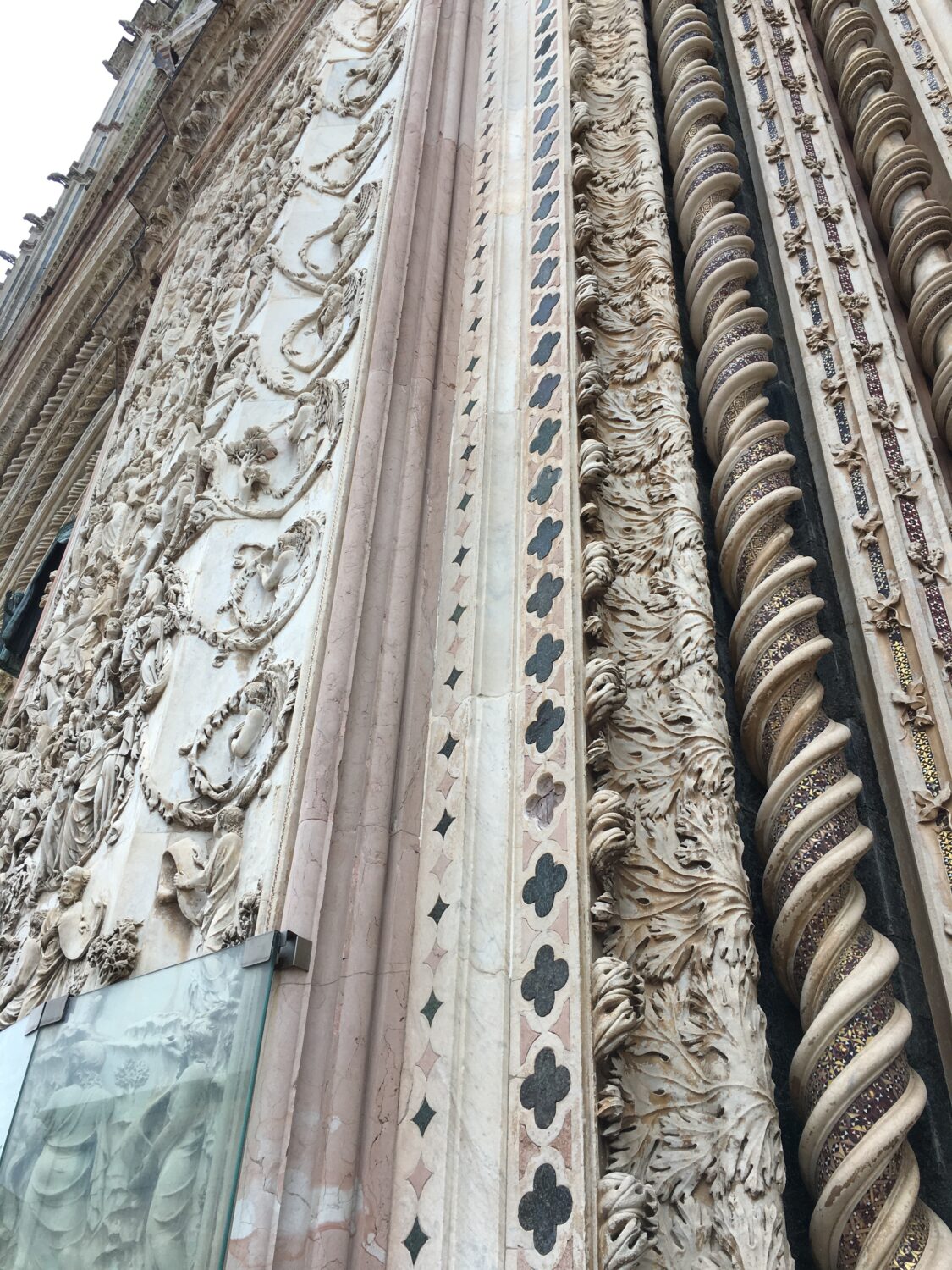Reading time: 6 minutes
When describing Italy’s wonders, whether natural or manmade, it is common to use the term breathtaking. In fact, one could argue that the adjective has become so overly used that it is almost clichè. This is unfortunate, and because I don’t want to understate the emotions conjured by Orvieto’s Duomo, in addition to breathtaking, I would add heart-stopping and hair-raising.
I have been fortunate enough to see some of Italy’s greatest masterpieces and contributions to humanity, but until recently, I had not seen Orvieto’s Cathedral of Santa Maria Assunta, or as it is commonly referred to, the Duomo. When a city has a “Duomo”, such as Milan, Florence, or Siena, the official name is of little importance because as far as that city is concerned, there can be no other.
Orvieto’s historic center is small and unassuming. In fact, as you are desperately making your way towards the Duomo, you cannot help but wonder if everything you have read and seen about it is really true. How can such a monstrosity of a building possibly rise up from this maze of narrow alleys? Am I following the map correctly? The signs?
And then, just as you are about to recheck your map once again, you literally stop dead in your tracks. A grand piazza opens up before you and you unashamedly let your jaw drop as your eyes adjust to the sheer magnitude of the building before you. At first, you aren’t even sure where to look: up, down, eye level. It is so overwhelming that it takes a few minutes to contemplate the grandiosity. Is it Gothic? Is it Romanesque? Have I ever seen anything quite like it?
Details of the Facade
Take a moment, or as long as you feel you need, to assess it from all angles and vantage points of the piazza. Then, step close enough to almost touch it (plexiglass has been placed over it to prevent this) and notice the intricate details. Construction began in 1290 as ordered by Pope Nicholas IV. The facade is made of marble, basalt, and travertine sculpted and carved by master artisans. If it already reminds you of the Duomos of Florence or Siena, you have a great eye because Arnolfo di Cambio was one of the original architects of both Florence’s and Orvieto’s Duomos and Sienese architect, Lorenzo Maitani, took over Orvieto’s facade in 1309 modeling it after Siena’s Duomo.


The bas-reliefs depict scenes from the book of Genesis, the life of Jesus, the Tree of Jesse, and the Last Judgment. The massive bronze doors actually date to the 1960s when the original wooden ones were replaced. Just above the doors are copies of the original 14th-century sculptures. With the exception of Archangel Gabriel, the bronze evangelists are all original to the 14th century. Because of its height, it is difficult to truly see the detail of the mosaics that grace the facade and date from the 14th to 19th centuries. Surrounding the magnificent rose window are the statues of the prophets and apostles.
The Inside
If you haven’t already purchased your ticket online, do so now in person. The ticket office is located directly in front of the Duomo and is valid for both the Duomo and the MODO (Museo Opera del Duomo) Museum. Visiting in early September around 10 a.m., there was no one even in line, however; depending on the tourist season, you may find a crowd.

If you aren’t sure what to expect from the interior, you may be thinking that it just may be one of those Duomos that has an astounding exterior and in layman’s terms, a very plain inside. How mistaken you would be! The magnitude of this cathedral is humbling. Notice the stained glass windows with the rare addition of alabaster stone allowing the sunlight to soften ever so slightly.
Be prepared to have your knees buckle when you step into the San Brizio Chapel (right of the altar). The not-of-this-world frescos were painted by Beato Angelico and Luca Signorelli from Cortona, who was one of Michelangelo’s teachers and supposedly inspired the Sistine Chapel. The scenes include the Apocalypse but are also a reflection of Italian politics in the late 1400s. If there were a place to sit down here, I could have stayed here the entire day gawking at every minute detail. Absolutely mindblowing!

The altar is also magnificently frescoed and includes two fantastic marble statues of the Virgin Mary by Francesco Mochi. In fact, anyone who is fortunate enough to visit the Cathedral after 2019, will be able to see all 18 of the original statues that were removed in 1897. Don’t miss the Pietà sculpted from a single piece of marble by Ippolito Scalza in 1579.
I hope you will allow enough time here and that your mind will be boggled by such a brilliant creation. It should leave you questioning man’s capabilities and how it could be possible that people were capable of creating such wonders over 500 years ago. How do we compare? Or, rather, how dare we compare ourselves to them.
Read more about visiting Orvieto here.

